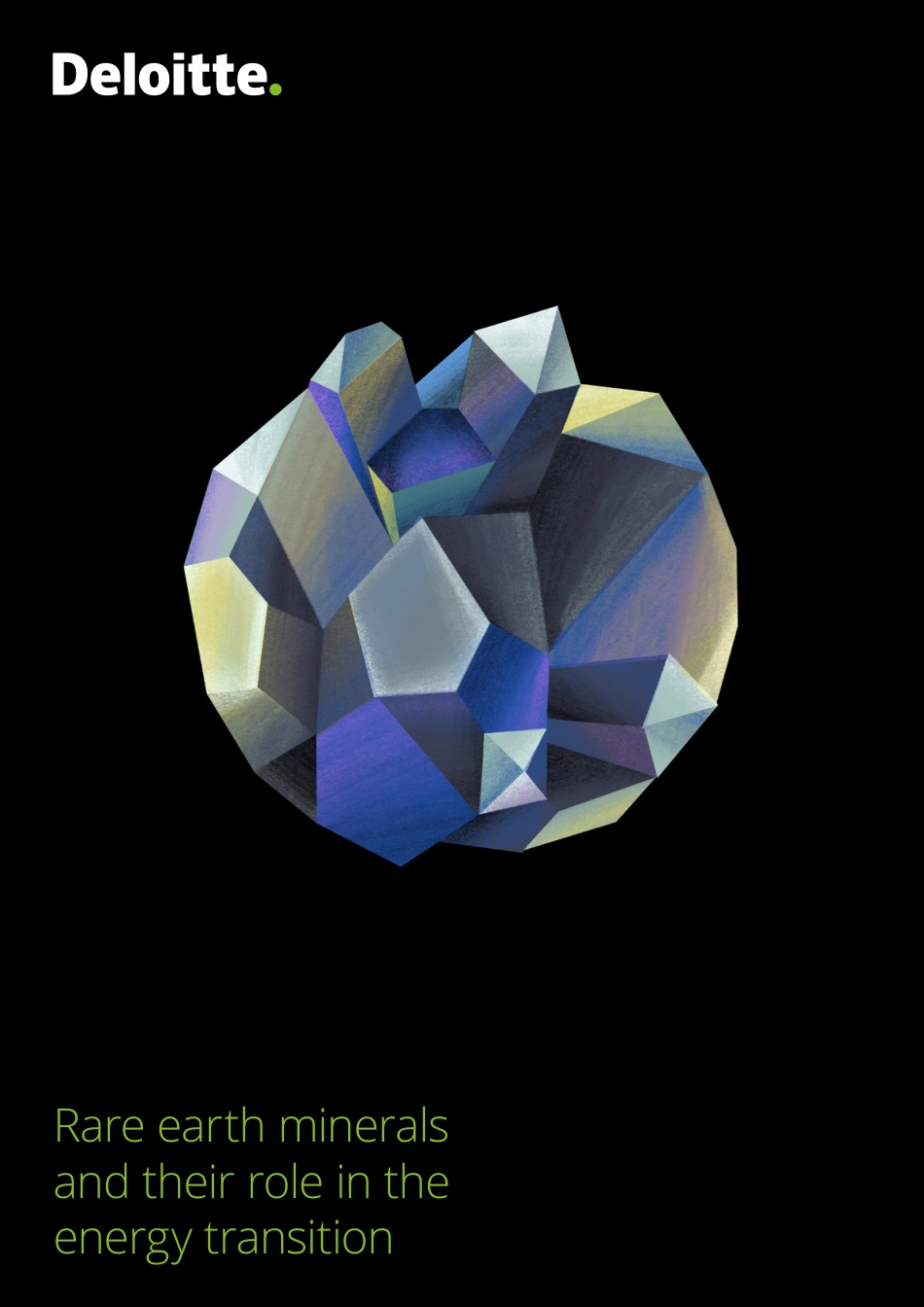Rare earth minerals and their role in the energy transitionDeloitte I Rare earth minerals and their role in the energy transition01IntroductionThe world is undergoing an energy transition, as it seeks to move away from reliance on fossil fuels. This shift has created new demand and supply chain dependencies for a different kind of natural resource, one that is relatively unfamiliar to the everyday consumer. As climate goals and policymakers emphasize the need for investment in green technology, there is a growing requirement for more mineral inputs, particularly rare earth minerals, to drive this growth and meet climate targets. In addition to their critical role in enabling renewable energy technologies, rare earth minerals are widely used in modern technologies such as smartphones, televisions, computers, light-emitting-diode (LED) lights, and defense systems.The key challenge now is determining whether a secure and sufficient supply of rare earth minerals is available to support this energy transition.Background Rare earth minerals (REMs) are composed of rare earth elements (REEs), a group of 17 chemically similar elements. These elements are categorized into two groups; light rare earth elements (LREEs) and heavy rare earth elements (HREEs).GroupPeriod1181234567 1H1.0081314151617 2He4.003 3Li6.941 4Be9.012 5B10.81 6C12.01 7N14.01 8O16 9F19 10Ne20.18 11Na22.99 12Mg24.313456789101112 13AI26.98 14Si28.09 15P30.97 16S32.07 17Cl35.45 18Ar39.95 19K39.10 20Ca40.08 21ScScandium44.96 22Ti47.88 23V50.94 24Cr52 25Mn54.94 26Fe55.85 27Co58.47 28Ni58.69 29Cu63.55 30Zn65.39 31Ga69.72 32Ge72.59 33As74.92 34Se78.96 35Br79.9 36Kr83.8 37Rb85.47 38Sr87.62 39YYttrium88.91 40Zr88.91 41Nb92.91 42Mo95.94 43Tc(98) 44Ru101.1 45Rh102.9 46Pd106.4 47Ag107.9 ...



